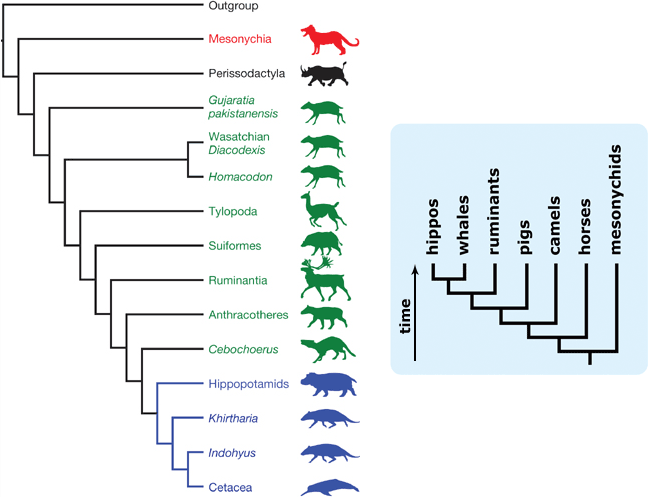The next step in preparing a tree for display is deciding exactly what information will be conveyed by the tree. What relationships will it show? Which taxa will you include or exclude?
All trees are not created equal. Scientists sometimes debate which of several trees for the same set of taxa is most accurate. How do you choose among several possible trees or even find a tree in the first place?
- Ideally, you would get the advice of local experts such as a biology professor, biology graduate student, or the education or collections person at a natural history museum. Even if they can’t point you to a specific tree, they may be able to refer you to an expert. You can also try soliciting this information via email from experts in other parts of the country or world. Another option is to post your question on the ASTC listserv or contact a scientific society.
- If you can’t reach an expert, you can get this information yourself. While not always examples of the best design practices, the following resources are good starting points for finding reliable information about relationships:
- The book Assembling the Tree of Life by Cracraft and Donoghue
- Tree of Life web project
- Bony Fish
- Tetrapods
- Plants
- If your overall goal is to teach about a particular group of organisms, choose a tree from a recently published article (in the last five years) in a major scientific journal (e.g., Science, Nature, PNAS, PloS One, etc.). These articles often include multiple trees. You’ll be looking for the one that is described as the “consensus” tree.

Left: A phylogeny of whale relatives from the journal Nature. Right: Whale phylogeny that was adapted for the general public from the Nature article. Whale phylogeny from Geisler, J.H., and J.M. Theodor. 2009. Hippopotamus and whale phylogeny. Nature 458, E1-E4(19 March 2009). doi:10.1038/nature07776 - Be sure to cite the source for your tree. (In small print, as you might use for an image credit, is fine.) Trees change as new evidence comes to light and there is sometimes debate about evolutionary relationships in the scientific literature, so it is important to make clear that your tree is based on a scientific study. It is possible that the weight of evidence will shift, and your tree will eventually become outdated. That’s ok. Most trees in museums will change very little with new evidence because they tend to focus on well-established relationships among larger groups of organisms, rather than on the relationships among species, which are more likely to be the subject of debate. Nevertheless, having a record of the source your tree relieves you of some responsibility since it can then be made clear (with additions to the exhibit or through docent interpretation) that the scientific consensus on this tree has shifted.

Part of a panel on horse phylogeny showing the source for that tree from the University of Oregon Museum of Natural and Cultural History. Download the whole panel as a pdf. Close-up view of horse phylogeny credits courtesy of the University of Oregon Museum of Natural and Cultural History.
The trees that you get from experts or the scientific literature are just starting points to know what the evolutionary relationships actually are. These trees are likely to involve too many taxa and include extraneous information or complicated scientific names. That’s ok! Once you have the basic tree you want to use, you’ll probably need to modify it for the general public by paring it down and sprucing it up with photographs and helpful information. The first thing to decide is whether you are going to include all the taxa that are on the original tree…
